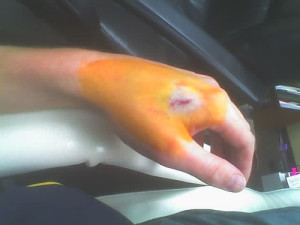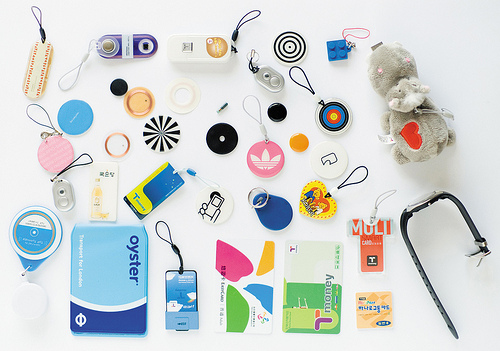What are the Uses of RFID Devices?
The Uses of RFID Devices
In our previous article we briefly discussed the uses and major advantages of RFID devices. In this article we will be discussion more in-depth applications of RFID technologies.
Commerce
RFID provides a way for organizations to identify and manage tools and equipment (asset tracking), without manual data entry. RFID is being adopted for item level tagging in retail stores. This provides electronic article surveillance (EAS), and a self checkout process for consumers. Automatic identification with RFID can be used for inventory systems. Manufactured products such as automobiles or garments can be tracked through the factory, then through shipping and ultimately to the customer.
Casinos can use RFID to authenticate poker chips, and can selectively invalidate any chips known to be stolen.
Wal-Mart and the United States Department of Defense have published requirements that their vendors place RFID tags on all shipments to improve supply chain management.
Access Control
RFID tags are widely used in identification badges, replacing earlier magnetic stripe cards. These badges need only be held within a certain distance of the reader to authenticate the holder. Tags can also be placed on vehicles, which can be read at a distance, to allow entrance to controlled areas without having to stop the vehicle and present a card or enter an access code.
Animal Identification
RFID tags for animals represent one of the oldest uses of RFID. Originally meant for large ranches and rough terrain, since the outbreak of mad-cow disease, RFID has become crucial in animal identification management. An implantable RFID tag or transponder can also be used for animal identification. The transponders are more well known as passive RFID, or “chips” on animals. The Canadian Cattle Identification Agency began using RFID tags as a replacement for barcode tags. Currently CCIA tags are used in Wisconsin and by United States farmers on a voluntary basis. The USDA is currently developing its own program.
RFID tags are required for all cattle, sheep and goats sold in Australia.
 Human Identification
Human Identification
Implantable RFID chips designed for animal tagging are now being used in humans. An early experiment with RFID implants was conducted by British professor of cybernetics Kevin Warwick, who implanted a chip in his arm in 1998. In 2004 Conrad Chase offered implanted chips in his night clubs in Barcelona and Rotterdam to identify their VIP customers, who in turn use it to pay for drinks.
Sport
In the early 1990s the first use of RFID for timing pigeon racing began. The technology was introduced by the company Deister Electronics in Germany. RFID can provide race start and end timings for individuals in large races where it is impossible to get accurate stopwatch readings for every entrant.
In athletics, the runners wear tags that are read by antennae placed alongside the track or on mats across the track. UHF tags provide accurate readings with specially designed antennas. Rush error, lap count errors and accidents at start time are avoided since anyone can start and finish any time without being in a batch mode. This is ideal for handicap races.
The design of chip+antenna controls the range from which it can be read. Short range compact chips are twist tied to the shoe or velcro strapped to the ankle. These need to be about 400mm from the mat, giving very good temporal resolution. Alternatively a chip plus a very large (a 125mm square) antenna can be incorporated into the bib number worn on the athlete’s chest at about 1.25m height.
In snow skiing, a number of ski resorts in Europe have adopted RFID tags to provide skiers hands-free access to ski lifts. Skiers do not have to take their passes out of their pockets. Ski jackets have a left pocket into which the chip+card fits.
Upcoming Article:
Look out for our next article in this series – “What is a Biometric Passport?” You will find it informative and fascinating reading. Click HERE to read this article.
Protect your Smartcards and Passport from scammers! This IGOGEER product will provide that protection.
Image: 03-22-05_1932 by Amal Graafstre
Continue Reading




